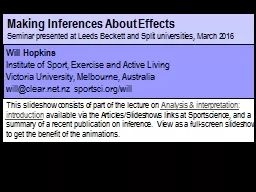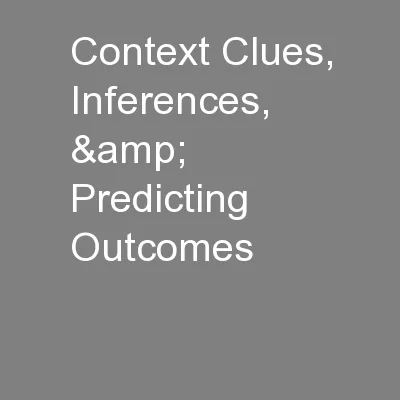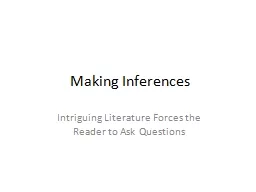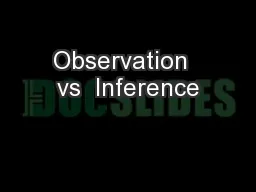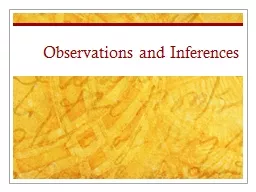PPT-Making Inferences About Effects
Author : myesha-ticknor | Published Date : 2017-05-15
Seminar presented at Leeds Beckett and Split universities March 2016 This slideshow consists of part of the lecture on Analysis amp interpretation introduction
Presentation Embed Code
Download Presentation
Download Presentation The PPT/PDF document "Making Inferences About Effects" is the property of its rightful owner. Permission is granted to download and print the materials on this website for personal, non-commercial use only, and to display it on your personal computer provided you do not modify the materials and that you retain all copyright notices contained in the materials. By downloading content from our website, you accept the terms of this agreement.
Making Inferences About Effects: Transcript
Download Rules Of Document
"Making Inferences About Effects"The content belongs to its owner. You may download and print it for personal use, without modification, and keep all copyright notices. By downloading, you agree to these terms.
Related Documents

